8 settings to change to make your Mac trackpad and keyboard work like Windows
If you've switched from a Windows laptop to a MacBook, you may have noticed that the keyboard and trackpad are a little off. But don't worry, this article will help you customize them to match the Windows setup you're used to. Just change these settings in macOS!
1. Turn on "Click in Bottom-Right Corner" for Secondary Click
One of the first things you might have trouble with is right-clicking on a Mac. On Windows, you typically click the bottom-right corner of the trackpad or tap it with two fingers to bring up a context menu and access more options. However, the same action on a Mac is called Secondary Click, which you can activate by holding down the Control key while clicking on the trackpad with one finger.
Here's how to enable the more familiar Windows right-click in macOS:
- Click the Apple menu in the menu bar and go to System Settings > Trackpad .
- Select the Point & Click tab and look for the Secondary Click menu .
- Select Click in Bottom-Right Corner or Click or Tap with Two Fingers if you prefer.

2. Change scroll direction (turn off Natural Scrolling)
By default, Macs have Natural Scrolling enabled, which means you swipe up on the trackpad to scroll down the content/page and vice versa — just like interacting with an iPhone touchscreen. While many users find this more intuitive, it can be a little unsettling because it works in the opposite direction on some Windows computers.
Here's how to turn off Natural Scrolling on your Mac to switch to the more familiar Windows-style scrolling:
- Click the Apple menu and select System Settings .
- Scroll down and select Trackpad in the left sidebar. Then go to the Scroll & Zoom tab .
- Turn off the Natural Scrolling toggle.

3. Turn on Tap to Click
Another default Mac feature that may feel strange is having to click down on the trackpad with one finger to register a click. This may not be intuitive, or you may prefer to tap the trackpad like you would on a Windows laptop. The Mac trackpad can do this too - here's how:
- Open the Apple menu and select System Settings .
- Select Trackpad in the left sidebar and go to the Point & Click tab .
- Turn on Tap to Click at the bottom.
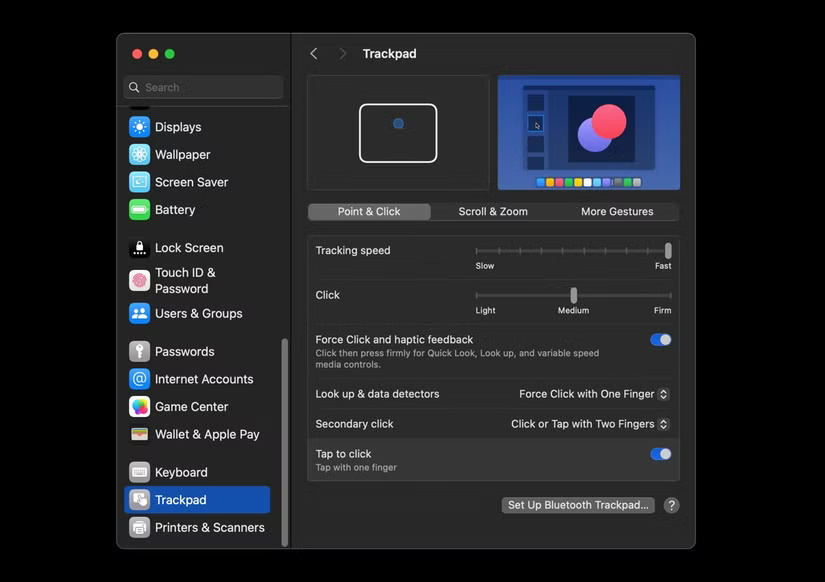
4. Customize trackpad gestures (multi-touch gestures)
One of the standout features of the MacBook is the large trackpad that supports multi-touch gestures, allowing you to perform a variety of actions with simple movements on the trackpad using two or more fingers. Fortunately, Windows and macOS have many of the same gestures, although they can be assigned to different actions by default.
Here are some useful trackpad gestures you can customize or enable on your Mac to improve your workflow:
Zoom in or out

Similar to Windows, you can pinch in or out with two fingers to zoom on your Mac. To enable this gesture, go to Apple menu > System Settings > Trackpad > Scroll & Zoom , then turn on the Zoom in or out option .
Show all open windows or Mission Control

This trackpad gesture lets you quickly see all the open windows and apps on your Mac. To enable it, go to Apple menu > System Settings > Trackpad . Select the More Gestures tab , click the Mission Control drop-down menu , and select Swipe Up with Three Fingers .
Show desktop
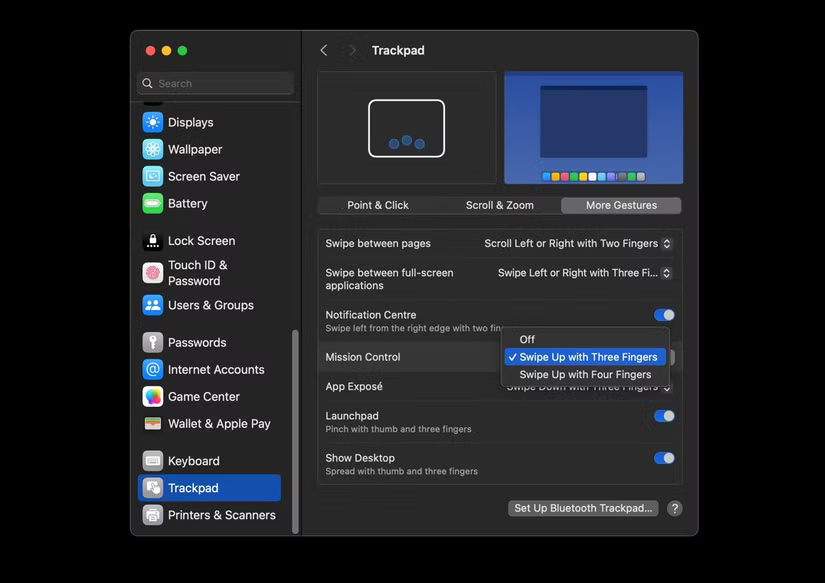
While you can show the desktop on Windows by swiping down on the trackpad with three fingers, on macOS you have to spread your thumb and three fingers to show the desktop.
To enable this gesture, go to Apple menu > System Settings > Trackpad . Select the More Gestures tab and turn on Show Desktop .
Switch desktops or swipe between full-screen apps
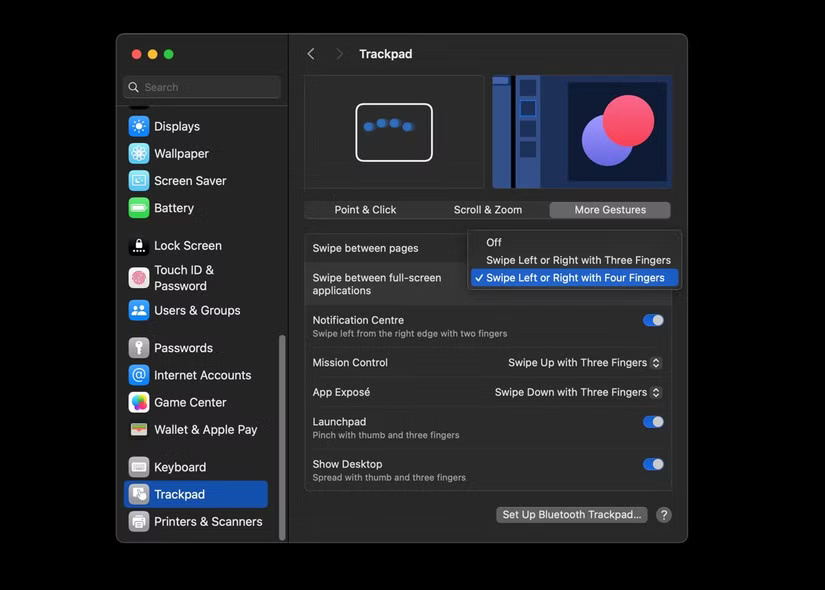
On Windows, you can switch between virtual desktops by swiping left or right with four fingers on your trackpad. You can replicate this gesture on your Mac by going to Apple menu > System Settings > Trackpad .
Select the More Gestures tab , click the Swipe between full-screen applications menu , and select Swipe Left or Right with Four Fingers .
5. Turn off "Click Wallpaper to Reveal Desktop"
Clicking on the desktop wallpaper on a Mac hides active windows and reveals the desktop. While this can be useful for quickly accessing apps or files on the desktop, it can be annoying if you accidentally click on the wallpaper or are unfamiliar with it if you are a Windows user.
Luckily, you can disable this feature by following these steps:
- Go to Apple menu > System Settings and select Desktop & Dock in the sidebar.
- Scroll down to the Click wallpaper to reveal desktop option in the Desktop & Stage Manager section and select Only in Stage Manager in the drop-down menu.
- Turn off the Stage Manager switch .
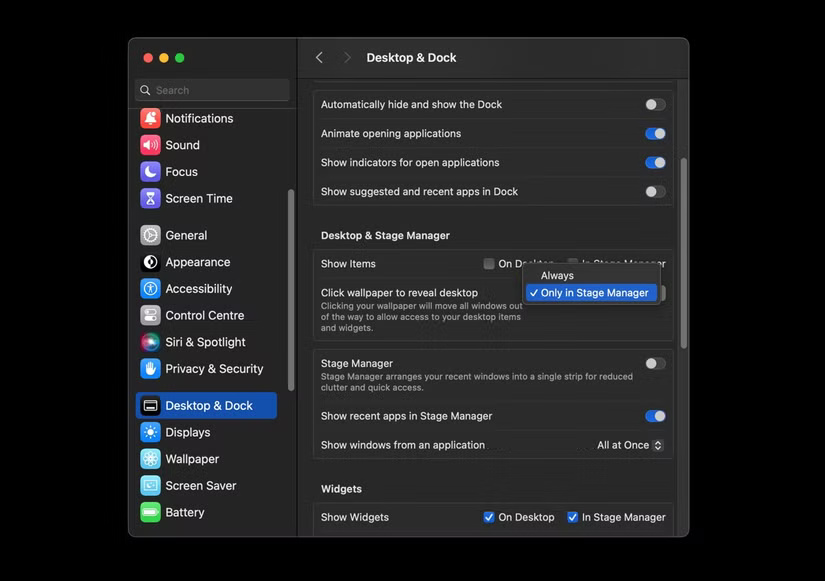
6. Remap Modifier keys
If you're used to a Windows keyboard, you'll quickly notice that some keys, especially the Modifier keys, are in different locations on a Mac keyboard and may not do exactly what you're used to. Modifier keys like Control, Option, and Command play an important role in keyboard shortcuts, so it's important to map them to match how you expect them to work.
For example, Windows PCs often use the Control key for many shortcuts that are assigned to the Command key on MacBooks. Thankfully, macOS provides an easy way to remap Modifier keys:
- Go to Apple menu > System Settings > Keyboard > Keyboard Shortcuts .
- Select Modifier Keys in the sidebar.
- For each modifier key you want to remap, click the pop-up menu and select the desired action when you press the key. For example, select the Control (⌃) key drop-down menu and choose ⌘ Command to perform that action when you press the Control key .
- Click Done to save your changes.
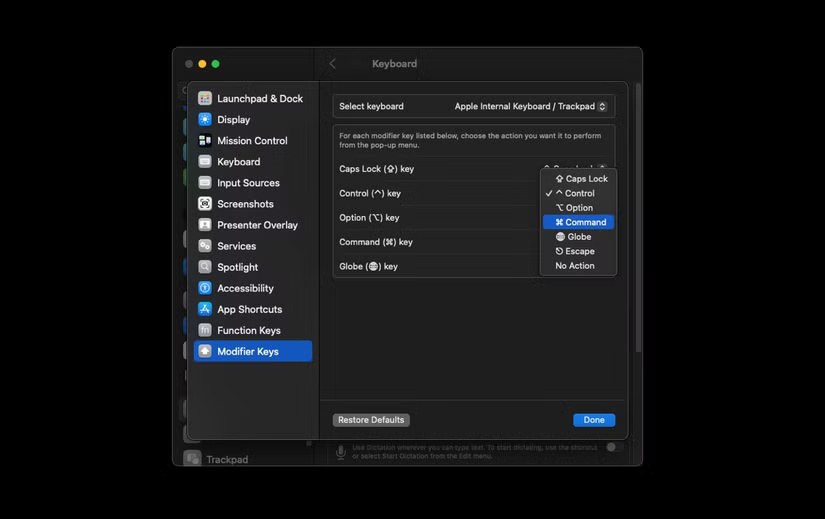
7. Customize system shortcuts
Your Mac comes with a set of default keyboard shortcuts for various actions that you can customize or disable, including screenshots, Mission Control, brightness, text shortcuts, and more. While you can't always perfectly replicate Windows shortcuts, customizing them as closely as possible can help make the transition smoother.
Here's how to customize keyboard shortcuts on your Mac:
- Go to Apple menu > System Settings > Keyboard > Keyboard Shortcuts .
- Select the option you want to change. For example, select Screenshots and double-click the shortcut next to the action you want to change.
- Enter the new key combination you want to use to replace that shortcut.
- Click Done to save your changes.
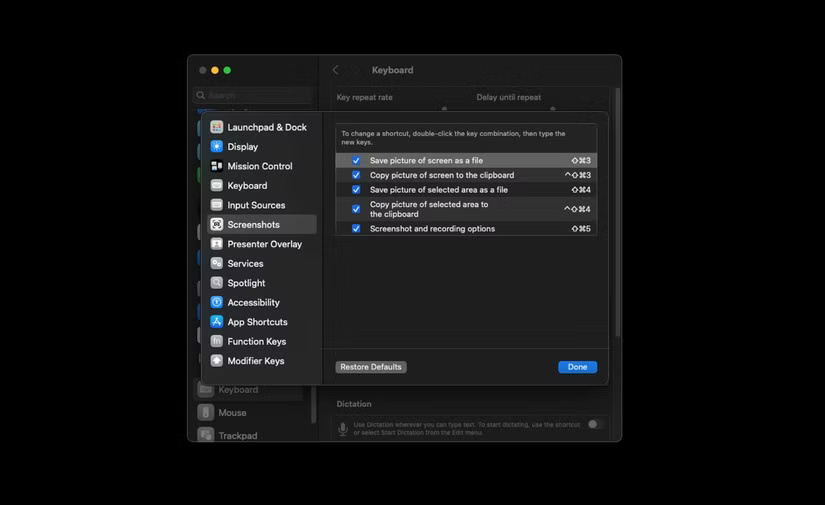
8. Turn on Keyboard Navigation
While the Tab key on Windows has different functions depending on the program you're using or the position of your cursor, it's commonly used to move between elements on a page, such as buttons and form fields. You can also use this feature on your Mac.
Here's how to enable Keyboard Navigation on your Mac:
- Go to Apple menu > System Settings > Keyboard .
- Turn on the Keyboard Navigation toggle .
- Now you can press the Tab key to move focus forward and Shift + Tab to move focus back.
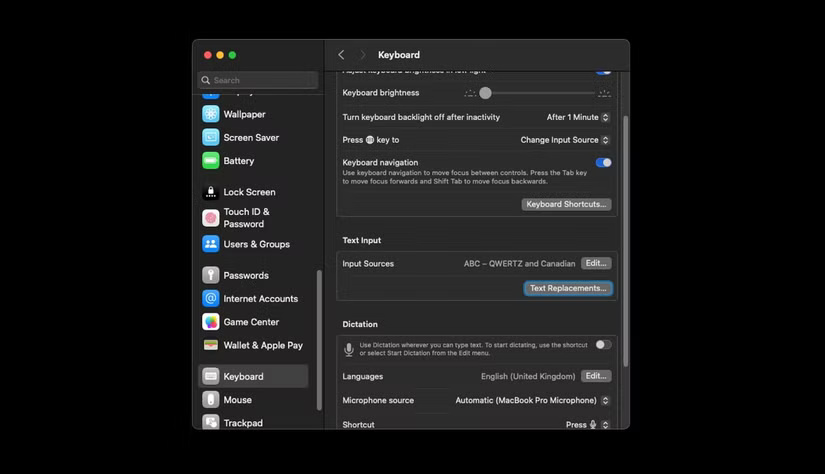
It's worth noting that Alt + Tab on Windows works differently or is more limited than on Mac. However, you can bring this popular Windows feature to macOS by installing a third-party app called AltTab.
While you certainly have some good reasons to switch from Windows to macOS, you may not be prepared for the inconveniences that come with the change. If learning how to navigate your Mac or remembering new keyboard shortcuts is a headache for you, these tweaks will make the transition easier.
 How to enable monetization on TikTok for quick approval
How to enable monetization on TikTok for quick approval 5 popular Auto Click software for computers today
5 popular Auto Click software for computers today Top best free logo design software by name today
Top best free logo design software by name today Top best mind mapping software on computers and laptops today
Top best mind mapping software on computers and laptops today Top 5 best mind mapping software
Top 5 best mind mapping software Download standard and beautiful Word file experience initiative cover template
Download standard and beautiful Word file experience initiative cover template